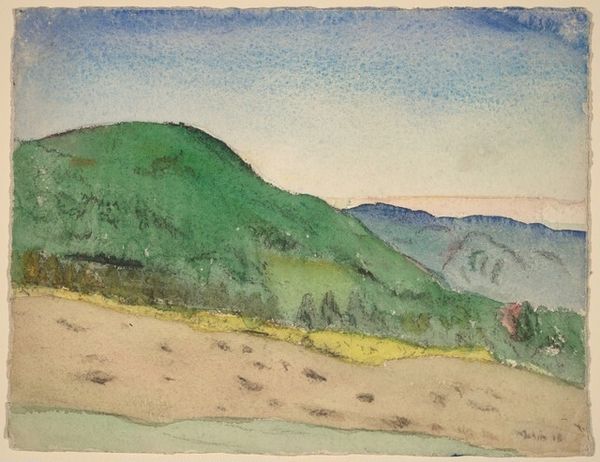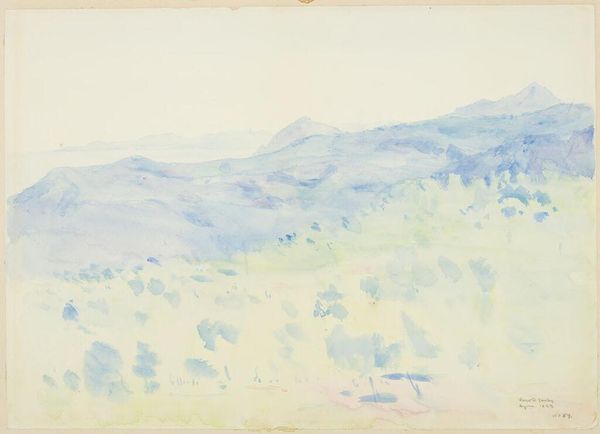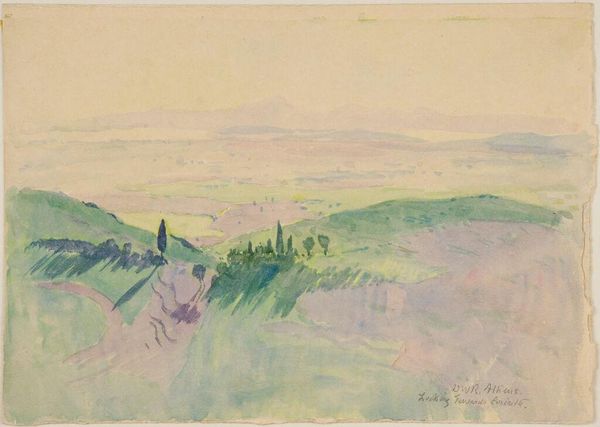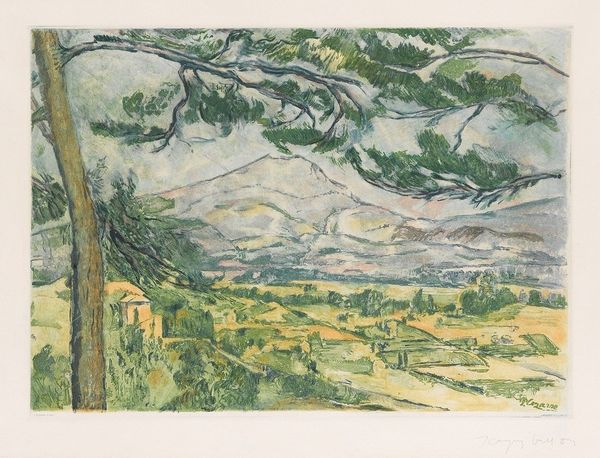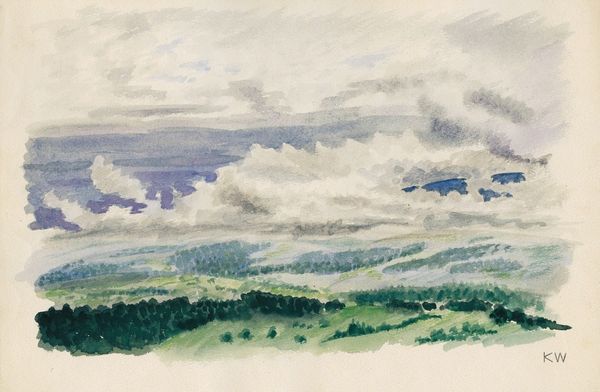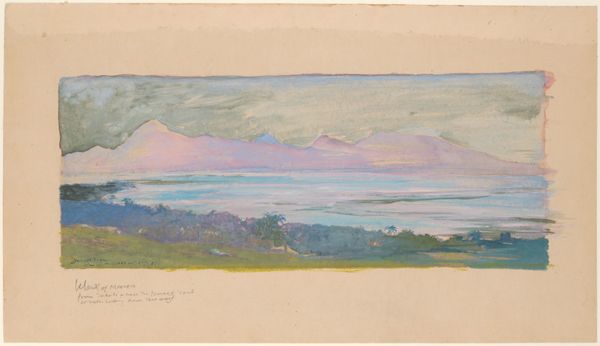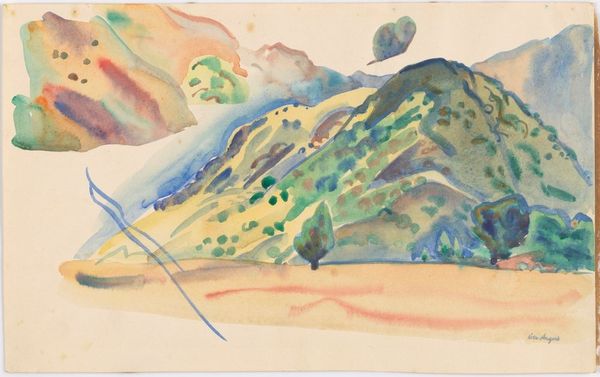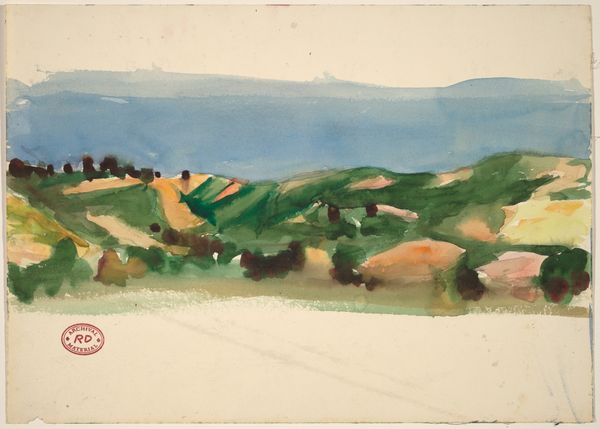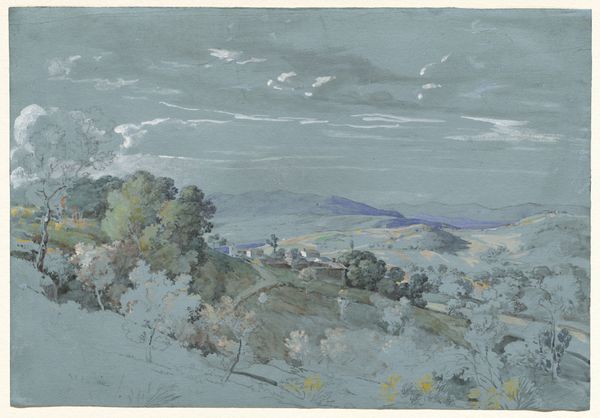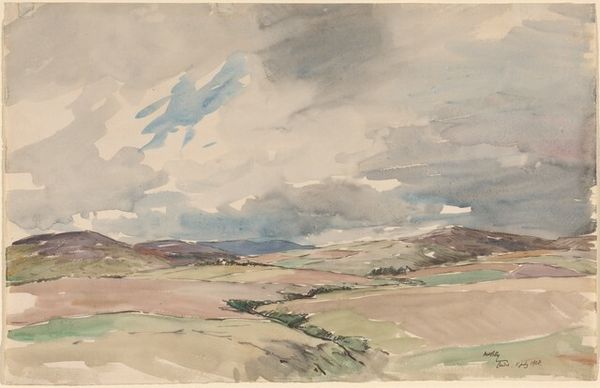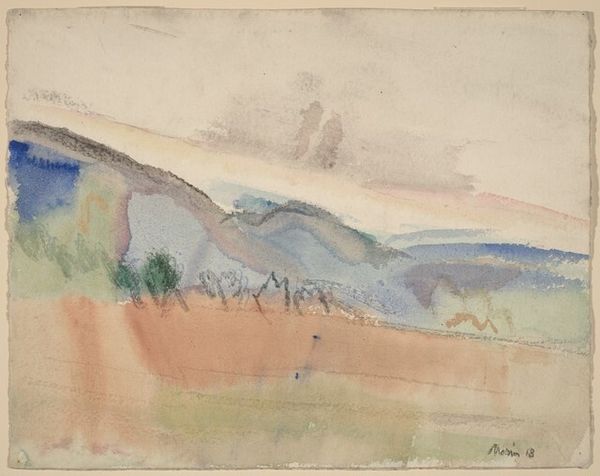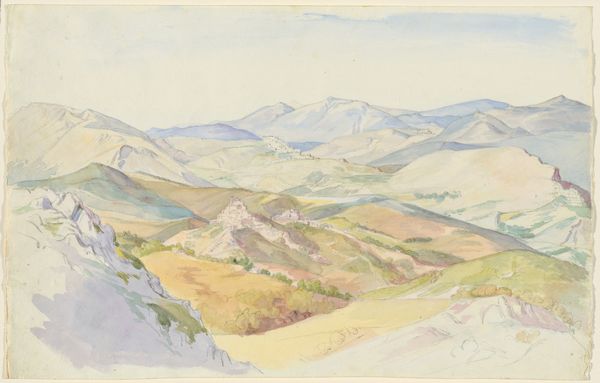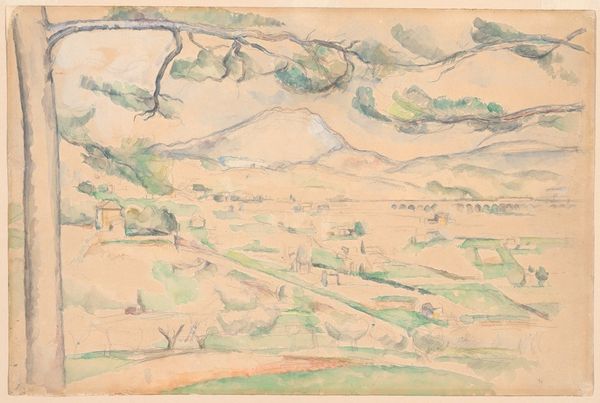
painting, watercolor
#
water colours
#
painting
#
landscape
#
watercolor
#
coloured pencil
#
expressionism
#
watercolor
Copyright: Public Domain: Artvee
Editor: This watercolor, "Naturstudie LIV" painted in 1924 by Karl Wiener, presents a sweeping landscape with an almost dreamlike quality. The colors are muted, yet there’s an underlying energy, especially in the hills. How do you interpret this work? Curator: I see a landscape imbued with symbolism, even perhaps unconsciously. The layering of the hills, one behind the other, each with a subtly different shade and texture, evokes the layers of memory itself. Think about it: what does a landscape *mean* in the context of 1924? The recent aftermath of the Great War is still clinging to people. Editor: That’s interesting. So you see the hills not just as hills, but as representing a weight or history? Curator: Precisely! And the light filtering through the scene—that band of light across the sky is also present in the lower plane, unifying it despite the darkness that’s in the land's shadowed contour. Editor: I hadn't considered that light that way. It's like hope threading its way through… Curator: Yes, perhaps even acting as a path through those difficult memories. The landscape can represent so much: trauma, resilience, hope… All of these elements co-exist in the visual field, but also in the viewer's subconscious experience. Don't you agree? Editor: I do, it adds another dimension. Looking at it again, it’s not just a pretty scene, it's an invitation to reflect. Curator: Exactly. And isn't that what truly compelling art always does? It reflects ourselves. Editor: Definitely something to think about when viewing landscapes moving forward! Thanks for sharing your perspective.
Comments
No comments
Be the first to comment and join the conversation on the ultimate creative platform.
